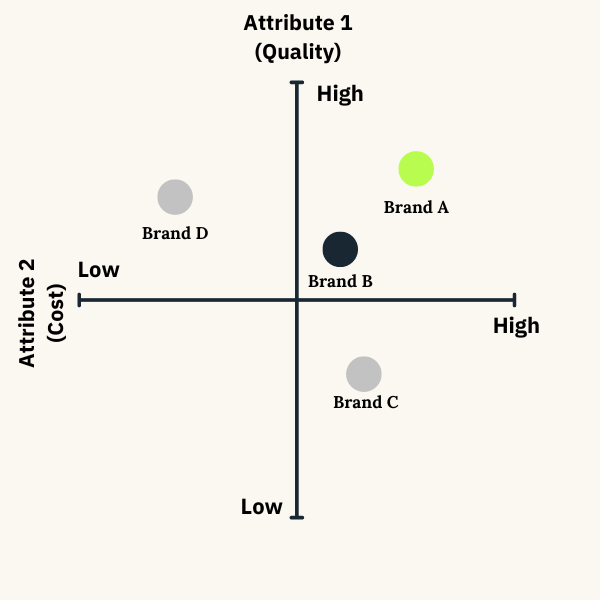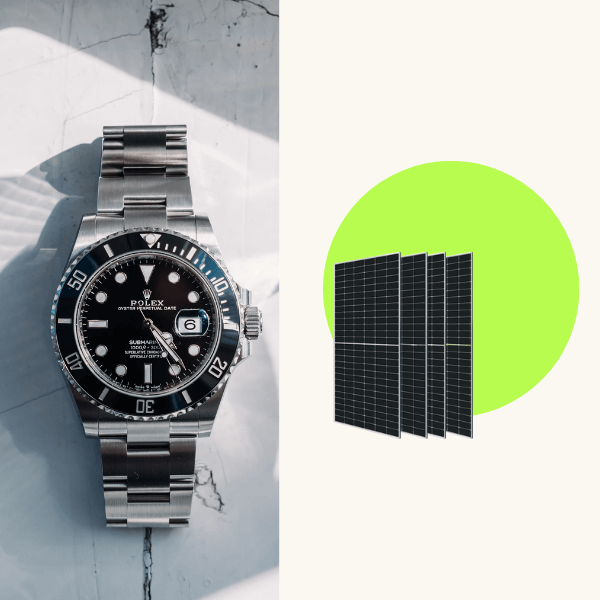What Can the Solar Industry Learn from the Swiss Watch Crisis?
A lesson in market positioning, branding, and fighting back!
In the 1970s, Switzerland suffered a major economic crisis.
For nearly a century, Swiss watchmakers dominated the global market. But now, they faced an existential threat from Japanese manufacturers.
In 1969, Seiko introduced the quartz watch, a cheaper and more accurate alternative to Swiss mechanical watches.
The Japanese Strategy: Technology + Affordability
Japanese companies mastered the art of marketing. They positioned their mass-produced quartz watches as:
- Technologically advanced
- Trendy and stylish
- Extremely accurate
- Affordable for a younger audience
This was the exact opposite of what Swiss watches represented—craftsmanship, prestige, handmade luxury.
The Swiss watch industry was at a crossroads.
(Now, does this sound familiar? The solar industry is facing a similar shift.)

The Swiss Response: Masterclass in Brand Positioning
Instead of competing on price, Swiss watchmakers doubled down on their mechanical watchmaking heritage.
They repositioned their brands as high-end luxury timepieces—watches that:
- Last for generations
- Can be passed down as heirlooms
- Offer unmatched craftsmanship and exclusivity
And they had the quality to back it up.
As a result, brands like Rolex, Omega, Patek Philippe, and Blancpain not only survived but dominate the luxury watch market today.
The Birth of Swatch: Competing with Quartz on Its Own Terms
The Swiss also launched Swatch, a brand designed to compete with Seiko and Casio.
Swatch watches were:
- Made from plastic
- Cheap to produce
- Trendy and appealing to younger buyers
This allowed the Swiss watch industry to capture both premium and budget markets.

A Place for Both: Rolex vs. Casio
Don’t get me wrong—Japanese watches are great.
I love my Casio G-Shock and Seiko watches. But both luxury and affordable brands have a place in the industry.
But as a business, you need to decide where you stand:
- Do you want to be the Casio of solar (high volume, affordable pricing)?
- Or do you want to be the Rolex of solar (high quality, premium pricing)?
- Maybe even the Patek Philippe of solar (ultra-premium, exclusive)?
Your positioning depends on:
- The volume you generate
- The lifetime margin per sale
Can You Build a Premium Brand in a Commoditized Industry?
The solar industry is becoming commoditized, making premium positioning difficult but not impossible.
Many argue that “Energy is energy”, just like “Time is time”.
But think about it: A $10 Casio tells the same time as a $15,000 Rolex—yet people still buy Rolex.
In fact, your cheap quartz watch may be more accurate than a mechanical Rolex.
So the real question is:
How can you position your solar brand to command the best premium—or capture the largest volume?
Let’s discuss. What’s your strategy?
Part A: What Exists Now?
The first step is to audit where you stand in the market. This needs to be thorough and honest because your brand’s foundation will be built on this.
Define Your Customer
Who is your customer? More importantly, is this your ideal customer?
Define this in both demographic and behavioral traits.
Some typical customer profiles:
- Business owners or professionals in a tier-1 city in India.
- Expats living abroad, looking to install solar back home.
Where Does Your Brand Stand?
Ask your customers:
- What made them choose you?
- What other companies or options were they evaluating?
- How did they first come across your brand?
What is Important to the Customer?
Tangible aspects:
- Convenience, Quality, Price, Technology, Service
Intangible aspects:
- Going green, Luxury, Environmental impact, Community values
What Are Your Competitors Doing?
- What do they stand for?
- How do they reinforce their brand?
Understanding your competitors’ positioning will help you carve out a unique identity for your brand.
Part B: What Can It Be?
Once you have a clear understanding of your current position, now you can define how you want to position your brand.
What is Your Ideal Brand Position?
- What qualities or values matter most to you?
- What do you, as a founder or business owner, stand for?
- Why do these values matter?
Be authentic, because your entire organization needs to align with this positioning.

Find the Overlap Between Customer Needs & Your Values
Look for where your company’s core values align with what your customers care about most.
Prioritize these overlapping values to build a strong brand identity.
What is Your Big Idea?
Define Your Positioning Statement
A simple framework to follow:
For [target market] who [market need], [your brand name] provides [main benefit that differentiates you] because [reason your audience should believe your claim].
Example:
For homeowners who want to go solar without getting cheated, Solar Buyer provides services and tools to help them find the right installer because they want peace of mind and confidence in their decision.
Refine Your Statement into a Single Word or Phrase
Examples:
- Nike – “Performance”
- Volvo – “Safety”
- Coca-Cola – “Happiness”
- Tesla – “Futuristic”
What’s your one defining word or phrase?
Test & Deploy Your Positioning
- Validate it with customers – Talk to existing and potential customers. Get their feedback.
- Develop messaging – Position your brand around the value you deliver, not just an ego-driven tagline.
- Align your team – From CEO to frontline staff, everyone should communicate the same message.
- Stay consistent across all channels – Your website, social media, marketing materials, and customer communication should tell the same story.
Authenticity Over Perfection
Perfection can feel inauthentic. Your company is made up of people, and people make mistakes.
- Don’t cover up mistakes—learn from them.
- Consistency matters more than perfection.
- Communicating a false brand message is worse than having no brand at all.
Final Thoughts
This is a shortened version of a large subject.
I’ve written about this in more detail on my blog here:
https://solar-buyer.com/good-solar-proposals/
All the best in building an authentic brand that delivers real value to your customers! 🚀


Leave a Reply